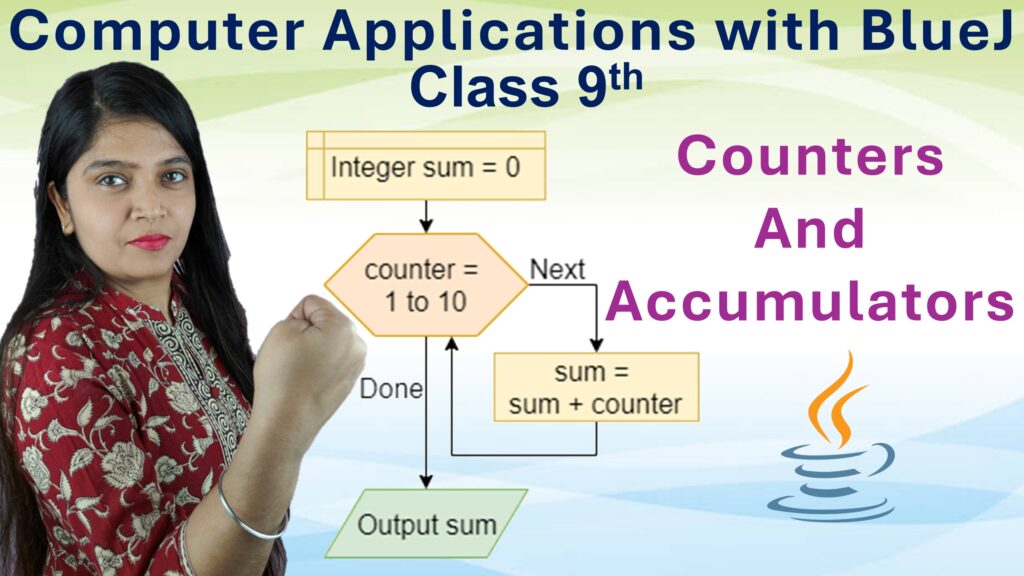Exercise: 2-B
Q1: Multiple Choice Type:
i. If \(x=3^m\) and \(y=3^{m+2}, \frac{x}{y}\), is:
⇒ \(\frac{x}{y} = \frac{3^m}{3^{m+2}} = 3^{m – (m+2)} = 3^{-2} = \frac{1}{9}\)
Answer: b. \(\frac{1}{9}\)
ii. \(\left(\frac{x^{-2}}{3y^{-1}}\right)^{-1}\) is equal to:
⇒ First simplify the inner expression:
\(\frac{x^{-2}}{3y^{-1}} = \frac{x^{-2}}{3} \cdot y^1 = \frac{y}{3x^2}\)
Now take reciprocal (since power is -1):
\(\left(\frac{y}{3x^2}\right)^{-1} = \frac{3x^2}{y}\)
Answer: a. \(\frac{3x^2}{y}\)
iii. If, \(\left(\frac{4}{5}\right)^{-3}\times\left(\frac{4}{5}\right)^{-5}=\left(\frac{4}{5}\right)^{3x-2}\) the value of x is:
⇒ Use exponent rule:
\(\left(\frac{4}{5}\right)^{-3 -5} = \left(\frac{4}{5}\right)^{-8}\)
So,
\(\left(\frac{4}{5}\right)^{3x – 2} = \left(\frac{4}{5}\right)^{-8}\)
Now compare powers:
\(3x – 2 = -8 \Rightarrow 3x = -6 \Rightarrow x = -2\)
Answer: c. -2
iv. If \(\left(\frac{m}{n}\right)^{x-1}=\left(\frac{n}{m}\right)^{x-5}\), the value of x is:
⇒ Rewrite RHS using reciprocal rule:
\(\left(\frac{n}{m}\right)^{x – 5} = \left(\frac{m}{n}\right)^{-(x – 5)}\)
So,
\(\left(\frac{m}{n}\right)^{x – 1} = \left(\frac{m}{n}\right)^{-(x – 5)}\)
Now compare powers:
\(x – 1 = -(x – 5)\)
⇒ \(x – 1 = -x + 5\)
⇒ \(2x = 6 \Rightarrow x = 3\)
Answer: a. 3
v. \(\left(\frac{1}{7}\right)^{-3}\times7^{-1}\times\frac{1}{49}\) is equal to:
⇒ \(\left(\frac{1}{7}\right)^{-3} = 7^3 = 343\)
⇒ \(7^{-1} = \frac{1}{7}\), \(\frac{1}{49} = 7^{-2}\)
So,
\(343 \times \frac{1}{7} \times \frac{1}{49} = 7^3 \times 7^{-1} \times 7^{-2}\)
⇒ \(7^{3 -1 -2} = 7^0 = 1\)
Answer: d. 1
Q2: Compute:
i. \(1^8 \times 3^0 \times 5^3 \times 2^2\)
⇒ \(1^8 = 1,\ 3^0 = 1,\ 5^3 = 125,\ 2^2 = 4\)
⇒ \(1 \times 1 \times 125 \times 4 = 500\)
Answer: 500
ii. \(\left(4^7\right)^2 \times \left(4^{-3}\right)^4\)
⇒ \(4^{7 \times 2} \times 4^{-3 \times 4} = 4^{14} \times 4^{-12} = 4^{2} = 16\)
Answer: 16
iii. \(\left(2^{-9} \div 2^{-11}\right)^3\)
⇒ \(2^{-9 – (-11)} = 2^2\)
⇒ \((2^2)^3 = 2^6 = 64\)
Answer: 64
iv. \(\left(\frac{2}{3}\right)^{-4} \times \left(\frac{27}{8}\right)^{-2}\)
⇒ \(\left(\frac{3}{2}\right)^4 \times \left(\frac{8}{27}\right)^2 = \frac{81}{16} \times \frac{64}{729} = \frac{5184}{11664} = \frac{4}{9}\)
Answer: \(\frac{4}{9}\)
v. \(\left(\frac{56}{28}\right)^0 \div \left(\frac{2}{5}\right)^3 \times \frac{16}{25}\)
⇒ Any number to power 0 is 1, so LHS = 1
⇒ \(\frac{1}{\left(\frac{2}{5}\right)^3} \times \frac{16}{25} = \left(\frac{5}{2}\right)^3 \times \frac{16}{25}\)
⇒ \(\frac{125}{8} \times \frac{16}{25} = \frac{2000}{200} = 10\)
Answer: 10
vi. \(\left(12\right)^{-2} \times 3^3\)
⇒ \(\left(12\right)^{-2} = \frac{1}{12^2} = \frac{1}{144}\), and \(3^3 = 27\)
⇒ \(\frac{1}{144} \times 27 = \frac{27}{144} = \frac{3}{16}\)
Answer: \(\frac{3}{16}\)
vii. \(\left(-5\right)^4 \times \left(-5\right)^6 \div \left(-5\right)^9\)
⇒ Use exponent rules: \(-5^{4+6-9} = -5^1 = -5\)
Answer: -5
viii. \(\left(-\frac{1}{3}\right)^4 \div \left(-\frac{1}{3}\right)^8 \times \left(-\frac{1}{3}\right)^5\)
⇒ Add/Subtract powers:
⇒ \(\left(-\frac{1}{3}\right)^{4 – 8 + 5} = \left(-\frac{1}{3}\right)^1 = -\frac{1}{3}\)
Answer: \(-\frac{1}{3}\)
ix. \(9^0 \times 4^{-1} \div 2^{-4}\)
⇒ \(1 \times \frac{1}{4} \div \frac{1}{16} = \frac{1}{4} \times 16 = 4\)
Answer: 4
x. \(\left(625\right)^{-\frac{3}{4}}\)
⇒ \(625 = 5^4 \Rightarrow \left(5^4\right)^{-3/4} = 5^{-3} = \frac{1}{125}\)
Answer: \(\frac{1}{125}\)
xi. \(\left(\frac{27}{64}\right)^{-\frac{2}{3}}\)
⇒ \(\left(\frac{3^3}{4^3}\right)^{-\frac{2}{3}} = \left(\frac{3}{4}\right)^{-2} = \left(\frac{4}{3}\right)^2 = \frac{16}{9}\)
Answer: \(\frac{16}{9}\)
xii. \(\left(\frac{1}{32}\right)^{-\frac{2}{5}}\)
⇒ \(32 = 2^5\), so \(\left(2^{-5}\right)^{-\frac{2}{5}} = 2^2 = 4\)
Answer: 4
xiii. \(\left(125\right)^{-\frac{2}{3}} \div \left(8\right)^{\frac{2}{3}}\)
⇒ \(125 = 5^3,\ 8 = 2^3\)
⇒ \((5^3)^{-2/3} \div (2^3)^{2/3} = 5^{-2} \div 2^2 = \frac{1}{25} \div 4 = \frac{1}{100}\)
Answer: \(\frac{1}{100}\)
xiv. \((243)^{\frac{2}{5}} \div (32)^{-\frac{2}{5}}\)
⇒ \(243 = 3^5,\ 32 = 2^5\)
⇒ \(3^2 \div 2^{-2} = 9 \times 4 = 36\)
Answer: 36
xv. \((-3)^4 – (\sqrt[4]{3})^0 \times (-2)^5 \div 64^{2/3}\)
⇒ \((-3)^4 = 81,\ (\sqrt[4]{3})^0 = 1,\ (-2)^5 = -32,\ 64^{2/3} = (4^3)^{2/3} = 4^2 = 16\)
⇒ Expression = \(81 – 1 \times (-32) \div 16 = 81 + 2 = 83\)
Answer: 83
xvi. \((27)^{2/3} \div \left(\frac{81}{16}\right)^{-1/4}\)
⇒ \(27 = 3^3 \Rightarrow 3^2 = 9,\ \left(\frac{81}{16}\right)^{-1/4} = \left(\frac{3^4}{2^4}\right)^{-1/4} = \left(\frac{3}{2}\right)^{-1} = \frac{2}{3}\)
⇒ \(9 \div \frac{2}{3} = 9 \times \frac{3}{2} = \frac{27}{2}\)
Answer: \(\frac{27}{2}\)
Q3: Simplify:
i. \(8^\frac{4}{3} + 25^\frac{3}{2} – \left(\frac{1}{27}\right)^{-\frac{2}{3}}\)
We will simplify each term one by one:
– \(8^\frac{4}{3} = \left(2^3\right)^\frac{4}{3} = 2^4 = 16\)
– \(25^\frac{3}{2} = \left(5^2\right)^\frac{3}{2} = 5^3 = 125\)
– \(\left(\frac{1}{27}\right)^{-\frac{2}{3}} = 27^\frac{2}{3} = 9\)
Now, combining them:
\[
16 + 125 – 9 = 132
\]
Answer: 132
ii. \(\left[\left(64\right)^{-2}\right]^{-3} \div \left[\left\{\left(-8\right)^2\right\}^3\right]^2\)
We will simplify each term one by one:
Step 1. \(\left(64\right)^{-2}\):
Since \(64 = 4^3\), we can write it as:
\[
\left(64\right)^{-2} = \left(4^3\right)^{-2} = 4^{-6}
\]
Now, \(\left[4^{-6}\right]^{-3} = 4^{18}\). Thus, we get:
\[
\left[\left(64\right)^{-2}\right]^{-3} = 4^{18}
\]Step 2. \(\left[\left\{\left(-8\right)^2\right\}^3\right]^2\):
First, \(\left(-8\right)^2 = 64\), so:
\[
\left\{\left(-8\right)^2\right\}^3 = 64^3 = 262144
\]
Then, \(\left(262144\right)^2 = 68719476736\).
Now, combining the two terms:
\[
\frac{4^{18}}{68719476736}
\]Since \(4^{18} = (2^2)^{18} = 2^{36}\), the final expression becomes:
\[
\frac{2^{36}}{68719476736}
\]
This simplifies to:
\[
\frac{2^{36}}{2^{36}} = 1
\]Answer: 1
iii. \((2^{-3} – 2^{-4})(2^{-3} + 2^{-4})\)
We will use the identity \((a-b)(a+b) = a^2 – b^2\). Here, \(a = 2^{-3}\) and \(b = 2^{-4}\).
– \((2^{-3})^2 = 2^{-6}\) and \((2^{-4})^2 = 2^{-8}\)
Now:
\[
2^{-6} – 2^{-8} = \frac{1}{64} – \frac{1}{256} = \frac{4}{256} – \frac{1}{256} = \frac{3}{256}
\]
Answer: \(\frac{3}{256}\)
Q4: Evaluate:
i. \(\left(-5\right)^0\)
Any non-zero number raised to the power of 0 is equal to 1:
\[
\left(-5\right)^0 = 1
\]
Answer: 1
ii. \(8^0 + 4^0 + 2^0\)
Each term involves raising a non-zero number to the power of 0, so each term equals 1:
\[
8^0 + 4^0 + 2^0 = 1 + 1 + 1 = 3
\]
Answer: 3
iii. \(\left(8 + 4 + 2\right)^0\)
First, we sum the numbers inside the parentheses:
\[
8 + 4 + 2 = 14
\]
Now, raise 14 to the power of 0:
\[
14^0 = 1
\]
Answer: 1
iv. \({4x}^0\)
Any expression of the form \(a^0\) where \(a \neq 0\) will equal 1, so:
\[
{4x}^0 = 1
\]
Answer: 1
v. \(\left(4x\right)^0\)
Similar to the previous case, \( (4x)^0 = 1 \) for any non-zero value of \(x\):
\[
(4x)^0 = 1
\]
Answer: 1
vi. \(\left[\left({10}^3\right)^0\right]^5\)
First simplify the inner expression:
\[
\left(10^3\right)^0 = 1
\]
Now raise 1 to the power of 5:
\[
1^5 = 1
\]
Answer: 1
vii. \(\left(7x^0\right)^2\)
Since \(x^0 = 1\), this simplifies to:
\[
\left(7 \times 1\right)^2 = 7^2 = 49
\]
Answer: 49
viii. \(9^0 + 9^{-1} – 9^{-2} + 9^\frac{1}{2} – 9^{-\frac{1}{2}}\)
Simplify each term:
– \(9^0 = 1\)
– \(9^{-1} = \frac{1}{9}\)
– \(9^{-2} = \frac{1}{81}\)
– \(9^{\frac{1}{2}} = 3\) (since \(\sqrt{9} = 3\))
– \(9^{-\frac{1}{2}} = \frac{1}{3}\)
Now, combine them:
\[
1 + \frac{1}{9} – \frac{1}{81} + 3 – \frac{1}{3}
\]First, simplify \(1 + 3 = 4\). Now combine the fractions:
\[
\frac{1}{9} – \frac{1}{81} = \frac{9}{81} – \frac{1}{81} = \frac{8}{81}
\]
Now subtract \(\frac{1}{3} = \frac{27}{81}\):
\[
4 + \frac{8}{81} – \frac{27}{81} = 4 – \frac{19}{81} = \frac{324}{81} – \frac{19}{81} = \frac{305}{81}
\]
So, the final answer is:
\[
\frac{305}{81}
\]
Answer: \(\frac{305}{81}\)
Q5: Simplify:
i. \(\frac{a^5b^2}{a^2b^{-3}}\)
We simplify the powers of \(a\) and \(b\) using the laws of exponents:
\[
\frac{a^5}{a^2} \times \frac{b^2}{b^{-3}} = a^{5-2} \times b^{2 – (-3)} = a^3 \times b^{2+3} = a^3 \times b^5
\]
Answer: \(a^3b^5\)
ii. \(15y^8 \div 3y^3\)
First, divide the constants and simplify the powers of \(y\):
\[
\frac{15}{3} \times \frac{y^8}{y^3} = 5 \times y^{8-3} = 5y^5
\]
Answer: \(5y^5\)
iii. \(x^{10}y^6 \div x^3y^{-2}\)
Simplify the powers of \(x\) and \(y\):
\[
\frac{x^{10}}{x^3} \times \frac{y^6}{y^{-2}} = x^{10-3} \times y^{6 – (-2)} = x^7 \times y^{6+2} = x^7 \times y^8
\]
Answer: \(x^7y^8\)
iv. \(5z^{16} \div 15z^{-11}\)
First, divide the constants and simplify the powers of \(z\):
\[
\frac{5}{15} \times \frac{z^{16}}{z^{-11}} = \frac{1}{3} \times z^{16 – (-11)} = \frac{1}{3} \times z^{16+11} = \frac{1}{3} \times z^{27}
\]
Answer: \(\frac{z^{27}}{3}\)
v. \(\left(36x^2\right)^\frac{1}{2}\)
Apply the power of a power rule:
\[
\left(36x^2\right)^\frac{1}{2} = 36^\frac{1}{2} \times \left(x^2\right)^\frac{1}{2} = 6 \times x = 6x
\]
Answer: \(6x\)
vi. \(\left(125x^{-3}\right)^\frac{1}{3}\)
Apply the power of a power rule:
\[
\left(125x^{-3}\right)^\frac{1}{3} = 125^\frac{1}{3} \times \left(x^{-3}\right)^\frac{1}{3} = 5 \times x^{-1} = \frac{5}{x}
\]
Answer: \(\frac{5}{x}\)
vii. \(\left(2x^2y^{-3}\right)^{-2}\)
Apply the power of a power rule:
\[
\left(2x^2y^{-3}\right)^{-2} = 2^{-2} \times \left(x^2\right)^{-2} \times \left(y^{-3}\right)^{-2} = \frac{1}{4} \times x^{-4} \times y^6 = \frac{x^{-4}y^6}{4}
\]
Answer: \(\frac{x^{-4}y^6}{4}\)
viii. \(\left(27x^{-3}y^6\right)^\frac{2}{3}\)
Apply the power of a power rule:
\[
\left(27x^{-3}y^6\right)^\frac{2}{3} = 27^\frac{2}{3} \times \left(x^{-3}\right)^\frac{2}{3} \times \left(y^6\right)^\frac{2}{3} = 9 \times x^{-2} \times y^4 = 9x^{-2}y^4
\]
Answer: \(9x^{-2}y^4\)
ix. \(\left(-2x^\frac{2}{3}y^{-\frac{3}{2}}\right)^6\)
Apply the power of a power rule:
\[
\left(-2x^\frac{2}{3}y^{-\frac{3}{2}}\right)^6 = (-2)^6 \times \left(x^\frac{2}{3}\right)^6 \times \left(y^{-\frac{3}{2}}\right)^6 = 64 \times x^4 \times y^{-9}
\]
Answer: \(64x^4y^{-9}\)
Q6: Simplify: \(\left(x^{a+b}\right)^{a-b}.\left(x^{b+c}\right)^{b-c}.\left(x^{c-a}\right)^{c-a}\).
Step 1: Apply the power of a power rule:
The power of a power rule is: \((x^m)^n = x^{m \cdot n}\).
So, applying this rule to each term:
\(\left(x^{a+b}\right)^{a-b} = x^{(a+b)(a-b)}\)
\(\left(x^{b+c}\right)^{b-c} = x^{(b+c)(b-c)}\)
\(\left(x^{c+a}\right)^{c-a} = x^{(c+a)(c-a)}\)
Step 2: Expand the exponents:
\((a+b)(a-b) = a^2 – b^2\) (difference of squares)
\((b+c)(b-c) = b^2 – c^2\) (difference of squares)
\((c+a)(c-a) = c^2 – a^2\) (difference of squares)
Step 3: Substitute the expanded exponents:
\(x^{a^2 – b^2} \cdot x^{b^2 – c^2} \cdot x^{c^2 – a^2}\)
Step 4: Combine the terms using the product rule for exponents:
\(x^{(a^2 – b^2) + (b^2 – c^2) + (c^2 – a^2)}\)
Step 5: Simplify the expression:
\(a^2 – b^2 + b^2 – c^2 + c^2 – a^2\)
The terms \(b^2\) and \(-b^2\), \(c^2\) and \(-c^2\), \(a^2\) and \(-a^2\) cancel out:
\(x^0\)
Answer: \(x^0 = 1\)
Q7: Simplify:
i. \(\sqrt[5]{x^{20}y^{-10}z^5}\div\frac{x^3}{y^3}\)
Step 1: Simplify the fifth root:
\(\sqrt[5]{x^{20}y^{-10}z^5} = x^{\frac{20}{5}} y^{\frac{-10}{5}} z^{\frac{5}{5}} = x^4 y^{-2} z\)
Step 2: Simplify the division of the fractions:
\(\frac{x^4 y^{-2} z}{\frac{x^3}{y^3}} = x^4 y^{-2} z \times \frac{y^3}{x^3} = x^{4-3} y^{-2+3} z\)
Step 3: Simplify the exponents:
\(x^1 y^1 z = x y z\)
Answer: \(xyz\)
ii. \(\left(\frac{256a^{16}}{81b^4}\right)^{\frac{-3}{4}}\)
Step 1: Apply the power of a fraction rule:
\(\left(\frac{256a^{16}}{81b^4}\right)^{\frac{-3}{4}} = \frac{256^{\frac{-3}{4}} a^{16 \cdot \frac{-3}{4}}}{81^{\frac{-3}{4}} b^{4 \cdot \frac{-3}{4}}}\)
Step 2: Simplify each term:
\(256^{\frac{-3}{4}} = 2^{-6}\), because \(256 = 2^8\)
\(a^{16 \cdot \frac{-3}{4}} = a^{-12}\)
\(81^{\frac{-3}{4}} = 3^{-3}\), because \(81 = 3^4\)
\(b^{4 \cdot \frac{-3}{4}} = b^{-3}\)
Step 3: Put the simplified terms together:
\(\frac{2^{-6} a^{-12}}{3^{-3} b^{-3}}\)
Step 4: Simplify the negative exponents by moving terms to the denominator:
\(\frac{1}{2^6 a^{12}} \times \frac{3^3}{b^3}\)
Step 5: Final Simplified Expression:
\(\frac{3^3}{2^6 a^{12} b^3}\)
Answer: \(\frac{3^3}{2^6 a^{12} b^3} = \frac{27}{64 a^{12} b^3}\)
Q8: Simplify and express as positive indices:
i. \(\left(a^{-2}b\right)^{-2}.\left(ab\right)^{-3}\)
Step 1: Apply the power of a product rule:
\(\left(a^{-2}b\right)^{-2} = a^{4} b^{-2}\)
\(\left(ab\right)^{-3} = a^{-3} b^{-3}\)
Step 2: Combine the terms:
\(a^{4} b^{-2} \times a^{-3} b^{-3} = a^{4-3} b^{-2-3} = a^{1} b^{-5}\)
Step 3: Express with positive indices:
\(a b^{-5}\)
Answer: \(\frac{a}{b^{5}}\)
ii. \(\left(x^n y^{-m}\right)^4 \times \left(x^3 y^{-2}\right)^{-n}\)
Step 1: Apply the power of a product rule:
\(\left(x^n y^{-m}\right)^4 = x^{4n} y^{-4m}\)
\(\left(x^3 y^{-2}\right)^{-n} = x^{-3n} y^{2n}\)
Step 2: Combine the terms:
\(x^{4n} y^{-4m} \times x^{-3n} y^{2n} = x^{4n-3n} y^{-4m+2n} = x^{n} y^{2n-4m}\)
Answer: \(x^n y^{2n-4m}\)
iii. \(\left(\frac{125a^{-3}}{y^6}\right)^{\frac{-1}{3}}\)
Step 1: Apply the power of a quotient rule:
\(\left(\frac{125a^{-3}}{y^6}\right)^{\frac{-1}{3}} = \frac{125^{\frac{-1}{3}} a^{-3 \cdot \frac{-1}{3}}}{y^{6 \cdot \frac{-1}{3}}}\)
Step 2: Simplify each term:
\(125^{\frac{-1}{3}} = 5^{-1}\), because \(125 = 5^3\)
\(a^{-3 \cdot \frac{-1}{3}} = a^{1}\)
\(y^{6 \cdot \frac{-1}{3}} = y^{-2}\)
Step 3: Simplify the final expression:
\(\frac{a}{5 y^{-2}} = \frac{a y^{2}}{5}\)
Answer: \(\frac{a y^{2}}{5}\)
iv. \(\left(\frac{32x^{-5}}{243y^{-5}}\right)^{\frac{-1}{5}}\)
Step 1: Apply the power of a quotient rule:
\(\left(\frac{32x^{-5}}{243y^{-5}}\right)^{\frac{-1}{5}} = \frac{32^{\frac{-1}{5}} x^{-5 \cdot \frac{-1}{5}}}{243^{\frac{-1}{5}} y^{-5 \cdot \frac{-1}{5}}}\)
Step 2: Simplify each term:
\(32^{\frac{-1}{5}} = 2^{-1}\), because \(32 = 2^5\)
\(x^{-5 \cdot \frac{-1}{5}} = x^{1}\)
\(243^{\frac{-1}{5}} = 3^{-1}\), because \(243 = 3^5\)
\(y^{-5 \cdot \frac{-1}{5}} = y^{1}\)
Step 3: Simplify the final expression:
\(\frac{3 x}{2 y}\)
Answer: \(\frac{3x}{2y}\)
v. \(\left(a^{-2}b\right)^{\frac{1}{2}} \times \left(ab^{-3}\right)^{\frac{1}{3}}\)
Step 1: Apply the power of a product rule:
\(\left(a^{-2}b\right)^{\frac{1}{2}} = a^{-1} b^{\frac{1}{2}}\)
\(\left(ab^{-3}\right)^{\frac{1}{3}} = a^{\frac{1}{3}} b^{-1}\)
Step 2: Combine the terms:
\(a^{-1} b^{\frac{1}{2}} \times a^{\frac{1}{3}} b^{-1} = a^{-1+\frac{1}{3}} b^{\frac{1}{2}-1} = a^{-\frac{2}{3}} b^{-\frac{1}{2}}\)
Answer: \(\frac{1}{a^{\frac{2}{3}} b^{\frac{1}{2}}}\)
vi. \(\left(xy\right)^{m-n} \times \left(yz\right)^{n-l} \times \left(zx\right)^{l-m}\)
Step 1: Apply the power of a product rule:
\(\left(xy\right)^{m-n} = x^{m-n} y^{m-n}\)
\(\left(yz\right)^{n-l} = y^{n-l} z^{n-l}\)
\(\left(zx\right)^{l-m} = z^{l-m} x^{l-m}\)
Step 2: Combine the terms:
\(x^{m-n} y^{m-n} \times y^{n-l} z^{n-l} \times z^{l-m} x^{l-m} = x^{m-n+l-m} y^{m-n+n-l} z^{n-l+l-m}\)
\(= x^{l-n} y^{m-l} z^{n-m}\)
Answer: \(x^{l-n} y^{m-l} z^{n-m}\)
Q9: Shows that: \(\left(\frac{x^a}{x^{-b}}\right)^{a-b}.\left(\frac{x^b}{x^{-c}}\right)^{b-c}.\left(\frac{x^c}{x^{-a}}\right)^{c-a}=1\)
Step 1: Simplify each term separately
\(\left(\frac{x^a}{x^{-b}}\right)^{a-b}\) becomes:
\(\frac{x^a}{x^{-b}} = x^{a – (-b)} = x^{a + b}\), so:
\[
\left(x^{a + b}\right)^{a – b} = x^{(a + b)(a – b)} = x^{a^2 – b^2}
\]Similarly, \(\left(\frac{x^b}{x^{-c}}\right)^{b-c}\) becomes:
\(\frac{x^b}{x^{-c}} = x^{b – (-c)} = x^{b + c}\), so:
\[
\left(x^{b + c}\right)^{b – c} = x^{(b + c)(b – c)} = x^{b^2 – c^2}
\]Finally, \(\left(\frac{x^c}{x^{-a}}\right)^{c-a}\) becomes:
\(\frac{x^c}{x^{-a}} = x^{c – (-a)} = x^{c + a}\), so:
\[
\left(x^{c + a}\right)^{c – a} = x^{(c + a)(c – a)} = x^{c^2 – a^2}
\]
Step 2: Multiply the three terms together
Now, multiplying the simplified expressions:
\[
x^{a^2 – b^2} \times x^{b^2 – c^2} \times x^{c^2 – a^2}
\]Using the product rule of exponents (\(x^m \times x^n = x^{m+n}\)):
\[
x^{(a^2 – b^2) + (b^2 – c^2) + (c^2 – a^2)}
\]
Step 3: Simplify the exponent
Simplifying the expression inside the exponent:
\[
(a^2 – b^2) + (b^2 – c^2) + (c^2 – a^2) = a^2 – b^2 + b^2 – c^2 + c^2 – a^2
\]
The terms \(a^2\) and \(-a^2\) cancel out, \(b^2\) and \(-b^2\) cancel out, and \(c^2\) and \(-c^2\) cancel out, leaving:
\[
0
\]Step 4: Final Answer
Therefore, we have:
\[
x^0 = 1
\]Answer: 1
Q10: Evaluate: \(\frac{x^{5+n}\times\left(x^2\right)^{3n+1}}{x^{7n-2}}\)
Step 1: Apply the exponent rule on \(\left(x^2\right)^{3n+1}\)
We know that \(\left(x^m\right)^n = x^{m \times n}\). Therefore, applying this rule:
\[
\left(x^2\right)^{3n+1} = x^{2 \times (3n+1)} = x^{6n+2}
\]Step 2: Substitute the simplified term into the expression
The expression becomes:
\[
\frac{x^{5+n} \times x^{6n+2}}{x^{7n-2}}
\]Step 3: Use the product rule of exponents for the numerator
The product rule states that \(x^m \times x^n = x^{m+n}\). Therefore, applying this rule to the numerator:
\[
x^{5+n} \times x^{6n+2} = x^{(5+n) + (6n+2)} = x^{5 + n + 6n + 2} = x^{7n + 7}
\]Step 4: Apply the quotient rule of exponents
The quotient rule of exponents states that \(\frac{x^m}{x^n} = x^{m-n}\). Using this rule:
\[
\frac{x^{7n+7}}{x^{7n-2}} = x^{(7n + 7) – (7n – 2)} = x^{7n + 7 – 7n + 2} = x^{9}
\]Answer: \(x^9\)
Q11: Evaluate: \(\frac{a^{2n+1}\times a^{(2n+1)(2n-1)}}{a^{n(4n-1)}\times\left(a^2\right)^{2n+3}}\)
Step 1: Simplify the exponent of \(a^{(2n+1)(2n-1)}\)
Expand the exponent:
\[
(2n+1)(2n-1) = 4n^2 – 1
\]
So the expression becomes:
\[
\frac{a^{2n+1} \times a^{4n^2 – 1}}{a^{n(4n – 1)} \times \left(a^2\right)^{2n+3}}
\]Step 2: Apply the exponent rule for the denominator term \(\left(a^2\right)^{2n+3}\)
Using the exponent rule \(\left(a^m\right)^n = a^{m \times n}\), we get:
\[
\left(a^2\right)^{2n+3} = a^{2 \times (2n+3)} = a^{4n+6}
\]
So the expression becomes:
\[
\frac{a^{2n+1} \times a^{4n^2 – 1}}{a^{n(4n – 1)} \times a^{4n + 6}}
\]Step 3: Combine the powers of \(a\) in the numerator
Using the product rule \(a^m \times a^n = a^{m + n}\), we combine the terms in the numerator:
\[
a^{2n+1} \times a^{4n^2 – 1} = a^{(2n + 1) + (4n^2 – 1)} = a^{4n^2 + 2n}
\]Step 4: Apply the exponent rule to the denominator term \(a^{n(4n – 1)}\)
Expand \(n(4n – 1)\):
\[
n(4n – 1) = 4n^2 – n
\]
So the expression becomes:
\[
\frac{a^{4n^2 + 2n}}{a^{4n^2 – n} \times a^{4n + 6}}
\]Step 5: Combine the powers of \(a\) in the denominator
Use the product rule for exponents:
\[
a^{4n^2 – n} \times a^{4n + 6} = a^{(4n^2 – n) + (4n + 6)} = a^{4n^2 + 3n + 6}
\]Step 6: Apply the quotient rule of exponents
Use the quotient rule \(a^m / a^n = a^{m – n}\) to simplify the expression:
\[
\frac{a^{4n^2 + 2n}}{a^{4n^2 + 3n + 6}} = a^{(4n^2 + 2n) – (4n^2 + 3n + 6)} = a^{4n^2 + 2n – 4n^2 – 3n – 6}
\]
Simplifying further:
\[
= a^{-n – 6} = \frac{1}{a^{n+6}}
\]Answer: \(a^{-n-6} = \frac{1}{a^{n+6}}\)
Q12: Prove that: \(\left(m+n\right)^{-1}\left(m^{-1}+n^{-1}\right)=\left(mn\right)^{-1}\)
Step 1: Start with the LHS
\[
\text{LHS} = \left(m+n\right)^{-1} \cdot \left(m^{-1} + n^{-1}\right)
\]Step 2: Take LCM in the second bracket
\[
m^{-1} + n^{-1} = \frac{1}{m} + \frac{1}{n} = \frac{n + m}{mn}
\]So now:
\[
\text{LHS} = \left(m+n\right)^{-1} \cdot \frac{m + n}{mn}
\]Step 3: Use the identity \(a^{-1} = \frac{1}{a}\)
\[
\text{LHS} = \frac{1}{m + n} \cdot \frac{m + n}{mn}
\]Step 4: Cancel \((m + n)\) from numerator and denominator
\[
\text{LHS} = \frac{1}{mn}
\]Step 5: Write RHS
\[
\text{RHS} = (mn)^{-1} = \frac{1}{mn}
\]Conclusion:
\[
\text{LHS} = \text{RHS}
\]
Hence Proved.
Q13: Prove that:
i. \(\left(\frac{x^a}{x^b}\right)^\frac{1}{ab} \cdot \left(\frac{x^b}{x^c}\right)^\frac{1}{bc} \cdot \left(\frac{x^c}{x^a}\right)^\frac{1}{ca} = 1\)
Step 1: Apply exponent law \(\frac{x^m}{x^n} = x^{m – n}\)
\[
= \left(x^{a – b}\right)^\frac{1}{ab} \cdot \left(x^{b – c}\right)^\frac{1}{bc} \cdot \left(x^{c – a}\right)^\frac{1}{ca}
\]Step 2: Apply power law \((x^m)^n = x^{mn}\)
\[
= x^{\frac{a – b}{ab}} \cdot x^{\frac{b – c}{bc}} \cdot x^{\frac{c – a}{ca}}
\]Step 3: Use product law \(x^m \cdot x^n \cdot x^p = x^{m+n+p}\)
\[
= x^{\frac{a – b}{ab} + \frac{b – c}{bc} + \frac{c – a}{ca}}
\]Step 4: Simplify the exponent
Let’s find the sum of the exponents:
\[
\frac{a – b}{ab} + \frac{b – c}{bc} + \frac{c – a}{ca}
\]Take LCM of denominators = \(abc\)
\[
= \frac{(a – b)c + (b – c)a + (c – a)b}{abc}
\]Expand numerator:
\[
= (ac – bc) + (ab – ac) + (bc – ab) = 0
\]So:
\[
= x^0 = 1
\]Hence Proved.
ii. \(\frac{1}{1 + x^{a – b}} + \frac{1}{1 + x^{b – a}} = 1\)
Step 1: Use identity: \(x^{b – a} = \frac{1}{x^{a – b}}\)
So the second term becomes:
\[
\frac{1}{1 + \frac{1}{x^{a – b}}}
\]Step 2: Simplify both terms
\[
\frac{1}{1 + x^{a – b}} + \frac{1}{1 + \frac{1}{x^{a – b}}}
\]Now simplify the second term:
\[
\frac{1}{1 + \frac{1}{x^{a – b}}} = \frac{1}{\frac{x^{a – b} + 1}{x^{a – b}}} = \frac{x^{a – b}}{x^{a – b} + 1}
\]So full expression:
\[
\frac{1}{1 + x^{a – b}} + \frac{x^{a – b}}{x^{a – b} + 1}
\]Now take LCM:
\[
= \frac{1 + x^{a – b}}{1 + x^{a – b}} = 1
\]Hence Proved.
Q14: Find the value of n, when:
i. \({12}^{-5}\times{12}^{2n+1}={12}^{13}\div{12}^7\)
Step 1: Use laws of exponents
LHS: \({12}^{-5} \times {12}^{2n+1} = {12}^{(2n+1 – 5)} = {12}^{2n – 4}\)
RHS: \({12}^{13} \div {12}^7 = {12}^{13 – 7} = {12}^6\)
Step 2: Equating exponents
\[
2n – 4 = 6
\Rightarrow 2n = 10
\Rightarrow n = 5
\]Answer: n = 5
ii. \(\frac{a^{2n-3} \times \left(a^2\right)^{n+1}}{\left(a^4\right)^{-3}} = \left(a^3\right)^3 \div \left(a^6\right)^{-3}\)
Step 1: Simplify LHS
\[
\frac{a^{2n-3} \cdot a^{2(n+1)}}{a^{-12}} = \frac{a^{2n-3} \cdot a^{2n+2}}{a^{-12}} = \frac{a^{(4n -1)}}{a^{-12}} = a^{4n -1 +12} = a^{4n + 11}
\]Step 2: Simplify RHS
\[
\left(a^3\right)^3 \div \left(a^6\right)^{-3} = a^9 \div a^{-18} = a^{9 + 18} = a^{27}
\]Step 3: Equate exponents
\[
4n + 11 = 27
\Rightarrow 4n = 16
\Rightarrow n = 4
\]Answer: n = 4
Q15: Simplify:
i. \(\frac{a^{2n+3}\cdot a^{(2n+1)(n+2)}}{(a^3)^{2n+1} \cdot a^{n(2n+1)}}\)
Step 1: Expand exponents
Numerator:
\[
a^{2n+3} \cdot a^{(2n+1)(n+2)} = a^{2n+3 + (2n+1)(n+2)}
\]Denominator:
\[
(a^3)^{2n+1} \cdot a^{n(2n+1)} = a^{3(2n+1)} \cdot a^{n(2n+1)} = a^{3(2n+1) + n(2n+1)}
\]Step 2: Apply laws of exponents
\[
\frac{a^{2n+3 + (2n+1)(n+2)}}{a^{3(2n+1) + n(2n+1)}} = a^{[2n+3 + (2n+1)(n+2) – (3(2n+1) + n(2n+1))]}
\]Step 3: Expand terms
Expand numerator:
\[
(2n+1)(n+2) = 2n(n+2) + 1(n+2) = 2n^2 + 4n + n + 2 = 2n^2 + 5n + 2
\]
Numerator exponent becomes: \(2n + 3 + 2n^2 + 5n + 2 = 2n^2 + 7n + 5\)Expand denominator:
\[
3(2n+1) = 6n + 3,\quad n(2n+1) = 2n^2 + n
\]
Total denominator exponent = \(6n + 3 + 2n^2 + n = 2n^2 + 7n + 3\)Step 4: Final exponent
\[
a^{2n^2 + 7n + 5 – (2n^2 + 7n + 3)} = a^2
\]Answer: a²
ii. \(\frac{x^{2n+7}\cdot(x^2)^{3n+2}}{x^{4(2n+3)}}\)
Step 1: Simplify numerator
\[
x^{2n+7} \cdot x^{2(3n+2)} = x^{2n+7 + 6n + 4} = x^{8n + 11}
\]Step 2: Simplify denominator
\[
x^{4(2n+3)} = x^{8n + 12}
\]Step 3: Apply exponent rule
\[
x^{8n + 11 – (8n + 12)} = x^{-1}
\]Answer: x⁻¹
Q16: Evaluate:
i. \(\left(2^{-3}+3^{-2}\right)\times7^0\)
\[
2^{-3} = \frac{1}{8},\quad 3^{-2} = \frac{1}{9},\quad 7^0 = 1
\]
\[
\left(\frac{1}{8} + \frac{1}{9}\right) \times 1 = \frac{17}{72}
\]Answer: \(\frac{17}{72}\)
ii. \(\left(8^0+2^{-1}\right)\times3^2\)
\[
8^0 = 1,\quad 2^{-1} = \frac{1}{2},\quad 3^2 = 9
\]
\[
\left(1 + \frac{1}{2}\right) \times 9 = \frac{3}{2} \times 9 = \frac{27}{2}
\]Answer: \(\frac{27}{2}\)
iii. \(\left\{\left(\frac{1}{6}\right)^{-1}-\left(\frac{1}{5}\right)^{-1}\right\}^{-2}\)
\[
\left(\frac{1}{6}\right)^{-1} = 6,\quad \left(\frac{1}{5}\right)^{-1} = 5
\]
\[
(6 – 5)^{-2} = 1^{-2} = 1
\]Answer: 1
iv. \(\left[\left\{\left(-\frac{1}{3}\right)^{-2}\right\}^2\right]^{-1}\)
\[
\left(-\frac{1}{3}\right)^{-2} = \left(\frac{1}{(-1/3)^2}\right) = 9
\]
\[
\left(9\right)^2 = 81,\quad \left(81\right)^{-1} = \frac{1}{81}
\]Answer: \(\frac{1}{81}\)
v. \(\frac{5^{n+2}-5^{n+1}}{5^{n+1}}\)
Factor numerator:
\[
= \frac{5^{n+1}(5 – 1)}{5^{n+1}} = \frac{5^{n+1} \cdot 4}{5^{n+1}} = 4
\]Answer: 4
Q17: Find the value of x, if:
i. \(\frac{1}{(125)^{x-7}} = 5^{2x-1}\)
We know:
\[
125 = 5^3 \Rightarrow \frac{1}{125^{x-7}} = 125^{-(x-7)} = (5^3)^{-(x-7)} = 5^{-3(x – 7)}
\]
Now equating:
\[
5^{-3(x – 7)} = 5^{2x – 1}
\]
Since bases are same, equate powers:
\[
-3(x – 7) = 2x – 1 \Rightarrow -3x + 21 = 2x – 1
\Rightarrow 21 + 1 = 5x \Rightarrow x = \frac{22}{5}
\]Answer: \(\frac{22}{5}\)
ii. \(\left(\frac{2}{3}\right)^3 \times \left(\frac{2}{3}\right)^{-4} = \left(\frac{2}{3}\right)^{2x+1}\)
Using exponent addition rule:
\[
\left(\frac{2}{3}\right)^{3 – 4} = \left(\frac{2}{3}\right)^{-1}
\Rightarrow \left(\frac{2}{3}\right)^{-1} = \left(\frac{2}{3}\right)^{2x+1}
\]
Equating exponents:
\[
-1 = 2x + 1 \Rightarrow 2x = -2 \Rightarrow x = -1
\]Answer: \(-1\)
iii. \(4^x \div 4^{-3} = 4^5\)
Use rule: \(a^m \div a^n = a^{m – n}\)
\[
4^x \div 4^{-3} = 4^{x + 3}
\Rightarrow 4^{x + 3} = 4^5
\Rightarrow x + 3 = 5 \Rightarrow x = 2
\]Answer: 2
Q18: Simplify; \(\frac{81\times3^{n+1}-9\times3^n}{81\times3^{n+2}-9\times3^{n+1}}\)
Step 1: Factor powers of 3
Note that \(81 = 3^4\) and \(9 = 3^2\). So,
\[
= \frac{3^4 \cdot 3^{n+1} – 3^2 \cdot 3^n}{3^4 \cdot 3^{n+2} – 3^2 \cdot 3^{n+1}}
\]Step 2: Use exponent laws:
\[
3^4 \cdot 3^{n+1} = 3^{4 + n + 1} = 3^{n+5}
\]
\[
3^2 \cdot 3^n = 3^{n+2}
\]
\[
3^4 \cdot 3^{n+2} = 3^{n+6}
\]
\[
3^2 \cdot 3^{n+1} = 3^{n+3}
\]Now substitute back:
\[
= \frac{3^{n+5} – 3^{n+2}}{3^{n+6} – 3^{n+3}}
\]Step 3: Factor common power
Numerator:
\[
3^{n+2}(3^3 – 1) = 3^{n+2}(27 – 1) = 3^{n+2} \cdot 26
\]
Denominator:
\[
3^{n+3}(3^3 – 1) = 3^{n+3}(27 – 1) = 3^{n+3} \cdot 26
\]So:
\[
= \frac{3^{n+2} \cdot 26}{3^{n+3} \cdot 26}
\]Step 4: Cancel 26 and apply exponent rule:
\[
= \frac{3^{n+2}}{3^{n+3}} = 3^{(n+2) – (n+3)} = 3^{-1}
\]Answer: \(\frac{1}{3}\)
Q19: If \(2^{n-7}\times5^{n-4}=1250\); find n.
Step 1: Express 1250 in terms of primes
1250 = 125 × 10 = \(5^3 \times 2 \times 5 = 2^1 \times 5^4\)
So,
\[
2^{n-7} \cdot 5^{n-4} = 2^1 \cdot 5^4
\]Step 2: Compare the powers of 2 and 5
Matching bases:
– From \(2^{n-7} = 2^1\) ⇒ \(n – 7 = 1\) ⇒ n = 8
– Check if this value also works for 5:
\[
5^{n-4} = 5^{8-4} = 5^4
\]Answer: n = 8







Leave a Comment